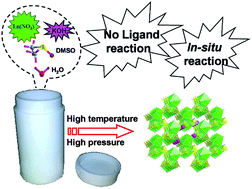An effective method for the synthesis of 3D inorganic Ln(iii)–K(i) sulfate open frameworks with unusually high thermal stability: in situ generation of sulfate anions†
Abstract
Through the in situ

* Corresponding authors
a
State Key Laboratory of Structural Chemistry, Fujian Institute of Research on the Structure of Matter, Chinese Academy of Sciences, Fuzhou, Fujian 350002, P. R. China
E-mail:
swdu@fjirsm.ac.cn
Fax: +86-591-83709470
b Graduate University of Chinese Academy of Sciences, Beijing 100039, P. R. China
c Beijing National Laboratory for Molecular Sciences, State Key Laboratory of Rare Earth Materials Chemistry and Applications, College of Chemistry and Molecular Engineering, Peking University, Beijing 100871, P. R. China
Through the in situ

 Please wait while we load your content...
Something went wrong. Try again?
Please wait while we load your content...
Something went wrong. Try again?
H. Zhang, M. Zhang, C. Tian, N. Li, P. Lin, Z. Li and S. Du, J. Mater. Chem., 2012, 22, 6831 DOI: 10.1039/C2JM16779D
To request permission to reproduce material from this article, please go to the Copyright Clearance Center request page.
If you are an author contributing to an RSC publication, you do not need to request permission provided correct acknowledgement is given.
If you are the author of this article, you do not need to request permission to reproduce figures and diagrams provided correct acknowledgement is given. If you want to reproduce the whole article in a third-party publication (excluding your thesis/dissertation for which permission is not required) please go to the Copyright Clearance Center request page.
Read more about how to correctly acknowledge RSC content.
 Fetching data from CrossRef.
Fetching data from CrossRef.
This may take some time to load.
Loading related content
